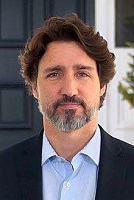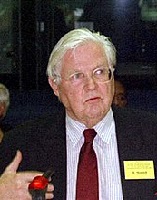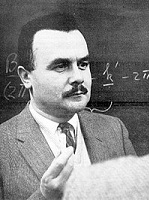UNIVERSITY of
BRITISH COLUMBIA
Vancouver, BC
Est. 1908
Ranking
#34
In the World
Times Higher Education
Est.
1908
Students
44,000
Other Rankings
- #6 in “Plant and Animal Science, #11 in Environment Ecology, #18 in Electrical and Electronic Engineering.” by 2020 US News subject ranking.
- #45 worldwide by the “QS World University Ranking”.
Mascot
- Rhett the Boston Terrier
Website
"
Tuum Est - It is yours
"
About
The University of British Columbia (UBC) is a public research university with campuses in Vancouver and Kelowna, British Columbia. Established in 1908, UBC is British Columbia’s oldest university. The university ranks among the top three universities in Canada. With an annual research budget of $600 million, UBC funds over 8,000 projects a year.
The Vancouver campus is situated in the University Endowment Lands, about 10 km (6 mi) west of Downtown Vancouver. UBC is home to TRIUMF, Canada’s national laboratory for particle and nuclear physics, which houses the world’s largest cyclotron. In addition to the Peter Wall Institute for Advanced Studies and Stuart Blusson Quantum Matter Institute, UBC and the Max Planck Society collectively established the first Max Planck Institute in North America, specializing in quantum materials. One of the largest research libraries in Canada, the UBC Library system has over 9.9 million volumes among its 21 branches. The Okanagan campus, acquired in 2005, is located in Kelowna, British Columbia.
As of 2017, eight Nobel laureates, 71 Rhodes scholars, 65 Olympians, ten fellows in both American Academy of Arts & Sciences and the Royal Society, and 208 fellows to the Royal Society of Canada have been affiliated with UBC. Three Canadian prime ministers, including Canada’s first female prime minister Kim Campbell and current prime minister Justin Trudeau have been educated at UBC.
History
Foundation
Early years
In 1877, six years after British Columbia joined Canada, the Superintendent of Education, John Jessop, submitted a proposal for the formation of a provincial University. The provincial legislature passed An Act Respecting the University of British Columbia in 1890, but disagreements arose over whether to build the university on Vancouver Island or the mainland.
The British Columbia University Act of 1908 formally called a provincial University into being, although its location was not specified. The governance was modelled on the provincial University of Toronto Act of 1906 which created a bicameral system of university government consisting of a senate (faculty), responsible for academic policy, and a board of governors (citizens) exercising exclusive control over financial policy and having formal authority in all other matters. The president, appointed by the board, was to provide a link between the two bodies and to perform institutional leadership. The Act constituted a twenty-one member senate with Francis Carter-Cotton of Vancouver as chancellor.
Before the University Act, there had been several attempts at creating a degree-granting university with help from the universities of Toronto and McGill. Columbian College in New Westminster, through its affiliation with Victoria College of the University of Toronto, began to offer university-level credit at the turn-of-the-century, but McGill came to dominate higher education in the early 1900s.
Building on a successful affiliation between Vancouver and Victoria high schools with McGill University, Henry Marshall Tory helped establish the McGill University College of British Columbia. From 1906 to 1915, McGill BC (as it was called) operated as a private institution providing the first few years toward a degree at McGill University or elsewhere. The Henry Marshall Tory Medal was established in 1941 by Tory, founding president of the University of Alberta and of the National Research Council of Canada, and a co-founder of Carleton University.
In the meantime, appeals were made to the government to revive the earlier legislation for a provincial institution, leading to the University Endowment Act in 1907, and the University Act in 1908. In 1910 the Point Grey site was chosen, and the government appointed Dr. Frank Fairchild Wesbrook as president in 1913, and Leonard Klinck as dean of Agriculture in 1914. A declining economy and the outbreak of war in August 1914 compelled the university to postpone plans for building at Point Grey, and instead the former McGill University College site at Fairview became home to the university until 1925. On the first day of lectures was September 30, 1915, the new independent university absorbed McGill University College. The University of British Columbia awarded its first degrees in 1916, and Klinck became the second president in 1919, serving until 1940.
Move to Point Grey
World War I
World War I dominated campus life and the student body was “decimated” by enlistments for active service, with three hundred UBC students in Company “D” alone. By the war’s end 697 members of the university had enlisted. 109 students graduated in the three war-time congregations, all but one in the Faculty of Arts and Science.
By 1920, the university had only three faculties: Arts, Applied Science, and Agriculture (with Departments of Agronomy, Animal Husbandry, Dairying, Horticulture and Poultry). It only awarded the degrees of Bachelor of Arts (BA), Bachelor of Applied Science (BASc), and Bachelor of Science in Agriculture (BSA). There were 576 male students and 386 female students in the 1920–21 winter session, but only 64 academic staff, including 6 women.
In the early part of the 20th century, professional education expanded beyond the traditional fields of theology, law and medicine. Although UBC did not offer degrees in these fields, it began to offer degrees in new professional areas such as engineering, agriculture, nursing and school teaching. It also introduced graduate training based on the German-inspired American model of specialized course work and the completion of a research thesis, with students completing M.A. degrees in natural sciences, social sciences and humanities.
In 1922, the twelve-hundred-strong student body embarked on a “Build the University” campaign. Students marched through the streets of Vancouver to draw attention to their plight, enlist popular support, and embarrass the government. Fifty-six thousand signatures were presented at legislature in support of the campaign, which was ultimately successful. On September 22, 1925, lectures began at the new Point Grey campus. Except for the library, Science and Power House buildings, all the campus buildings were temporary constructions. Students built two playing fields, but the university had no dormitories and no social centre. Still, the university continued to grow steadily.
Soon, however, the effects of the depression began to be felt. The provincial government, upon which the university depended heavily, cut the annual grant severely. In 1932–33, salaries were cut by up to 23%. Posts remained vacant, and a few faculty lost their jobs. Most graduate courses were dropped. In 1935, the university established the Department of Extension. Just as things began to improve, World War II began and Canada declared war on September 10, 1939. Soon afterwards, University President Klinck wrote:
From the day of the declaration of war, the University has been prepared to put at the disposal of the Government all possible assistance by way of laboratories, equipment and trained personnel, insofar as such action is consistent with the maintenance of reasonably efficient instructional standards. To do less would be unthinkable.
Heavy rains and melting snowfall eroded a deep ravine across the north end of the campus, in the Grand Campus Washout of 1935. The campus did not have storm drains, and surface runoff went down a ravine to the beach. When the university carved a ditch to drain flooding on University Avenue, the rush of water steepened the ravine and eroded it back as fast as 10 feet (3.0 m) per hour. The resulting gully eventually consumed 100,000 cubic yards (76,455 m3), two bridges, and buildings near Graham House. The university was closed for 4 and a half days. Afterwards, the gully was filled with debris from a nearby landslide, and only traces are visible today.
Military training on the campus became popular, then mandatory. WWII marked the first provision of money from the federal government to the university for research purposes. This laid a foundation for future research grants from the federal government of Canada.
Postwar years
–
By the end of World War II, Point Grey’s facilities could not meet the influx of veterans returning to their studies. The university needed new staff, courses, faculties, and buildings for teaching and accommodation. The student population rose from 2,974 in 1944–45 to 9,374 in 1947–48. Surplus Army and Air Force camps were used for both classrooms and accommodation. The university took over fifteen complete camps during the 1945–46 session, with a sixteenth camp on Little Mountain, in Vancouver, converted into suites for married students. Most of the camps were dismantled and carried by barge or truck to the university where the huts were scattered across the campus.
Student numbers hit 9,374 in 1948; more than 53% of the students were war veterans in 1947–67. Between 1947 and 1951, the university built twenty new permanent buildings, including the War Memorial Gym, built with money raised primarily by the students, was dedicated on October 26, 1951.
Recent history
Present
Prime Minister Pierre Trudeau announced the creation of the Museum of Anthropology at UBC on July 1, 1971. At a construction cost of $2.5 million the museum building, designed by Arthur Erickson, opened in 1976. That same year, the university launched a normal school program under the direction of Sally Rogow to train educators methods to teach students with multiple disabilities or were visually impaired.
UBC’s 15th president is Professor Santa J. Ono. He assumed the presidency on August 15, 2016. He served previously as the 28th president of the University of Cincinnati. Dr. Martha Piper – who served as the 11th president of the university – served as interim president from September 1, 2015, to June 30, 2016, following the resignation of Dr. Arvind Gupta.
Show More
Show Less
Campus
The main campus is at Point Grey, approximately 10 kilometres (6.2 mi) from downtown Vancouver. It is near several beaches and has views of the North Shore mountains. The 7.63-square-kilometre (1,890-acre) Pacific Spirit Regional Park serves as a green-belt between the campus and the city. Buildings on the Vancouver campus occupy 1.09 million m2 (11.7 million sq ft) gross on 1.7 square kilometres (420 acres) of maintained land. The campus street plan is mostly in a grid of malls (some of which are pedestrian-only). Lower Mall and West Mall are in the southwestern part of the peninsula, with Main, East, and Wesbrook Malls northeast of them.
Notable Alumni

Justin Trudeau
Canadian politician; 23rd prime minister of Canada; leader of the Liberal Party.
University of British Columbia

Kim Campbell
Canadian politician; diplomat; lawyer and writer; 19th prime minister of Canada.
University of British Columbia

Robert Mundell
Canadian economist; professor of economics at Columbia University; Nobel Memorial Prize in Economic Sciences.
University of British Columbia

Bertram Brockhouse
Canadian physicist; Nobel laureate in physics.
University of British Columbia
FAIR USE STATEMENT
This page may contain copyrighted material the use of which has not always been specifically authorized by the copyright owner. Most of the time, however, we give credits to the author of quotes, photos and other related materials. We sourced these materials from various internet sites, in an effort to advance understanding of environmental, political, geographical, anthropological, biological, human rights, economic, democratic, scientific, cultural and social justice issues, etc.
Source:
https://www.ubc.ca/
https://en.wikipedia.org/wiki/University_of_British_Columbia
https://www.timeshighereducation.com/
https://www.topuniversities.com/